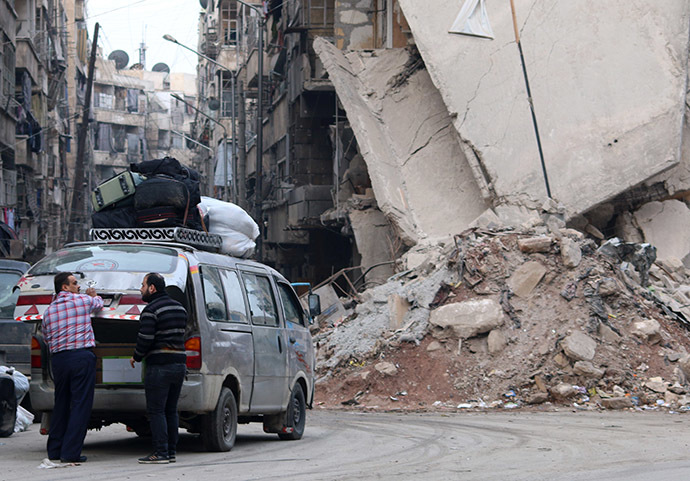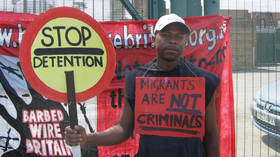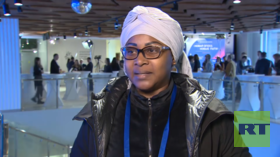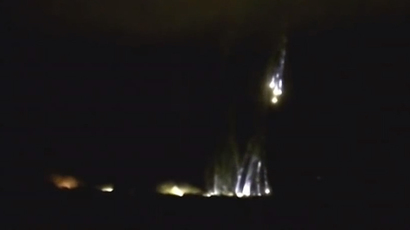Syrian militants profit on ruins of former industrial capital
Aleppo province is locked in ongoing fighting between a mix of hardline Islamists with so-called moderate opposition, and Syrian govt forces. Yet, RT’s Maria Finoshina found that combatants are still making profit off Syria’s former industrial center.
The Ancient City of Aleppo, part of World Heritage List, at one point was described as having “exceptional universal value because it represents medieval Arab architectural styles that are rare and authentic, in traditional human habitats,” but now as the devastating war drags on, the cultural and economic engine of Syria finds itself in complete destruction.
Once Syria’s business capital, industrial center and richest province, now Aleppo struggles to calculate the losses from almost 4 years of war.
“We had a huge market in Aleppo and competitive, cheaper than neighboring countries, a cheap labor force, enough power resources, all this affected neighboring markets this is why the terrorists’ mission was to destroy Syria – through Aleppo, the country's engine,” Mohammad Djmoul, a metal working factory owner told RT’s Maria Finoshina.
The city of Sheikh Najjar, an industrial cluster outside Aleppo used to be home to more than 1200 factories and enterprises. The city 15 kilometres from the regional centre was taken by the jihadist An Nusra group more than 2 years ago. Clashes have been more or less continuous ever since, but when RT crew visited it, Sheikh Najjar was officially considered free of militants.
The streets and the half-destroyed residential buildings are empty in large parts of Aleppo and so is the prospect of any immediate economic recovery. As part of the tour of the destroyed city, RT met Tareq Jenanni, a textile factory owner, who says his business has lost 90 percent of pre-war production capacity.

His factory used to produce 50 thousand meters of Aleppo’s trademark tissue every month. That’s now just 5 thousand, he blames the militants for his losses.
“Aleppo is known for exporting and I was producing things for export too – to all Arab countries. This is why they came here,” Jennani said. “Their mission is to stop exports, and destroy infrastructure – and weaken our state.”
As the battle for Aleppo continues, militants use the once industrial might of the province to profiteer at the expense of others.
Fares Shehabi, head of Aleppo Chamber of Industry told RT that militants allow factories to work only if the goods are distributed in rebel held areas and for free, implying the existence of slave labor in militant controlled pockets.
“If they are kind, they put ransom, if they are not kind – which is usually the case, they put gun to your head and take your goods. And then they sell it and buy weapons. Very primitive and very criminal,” Shehabi told RT. The producers keep telling the rebels: “If you don’t allow us then we cannot get money to buy raw materials, then we will not be able to sell in your areas as well!”
“We are not dealing with college graduates – we dealing with elementary education level,” Shehabi said.














